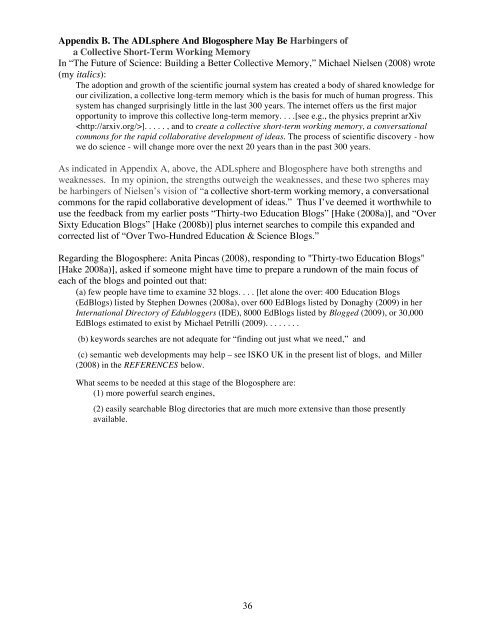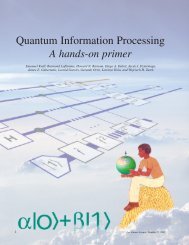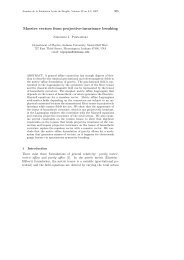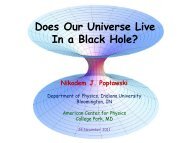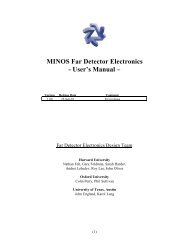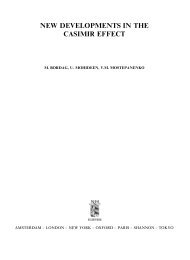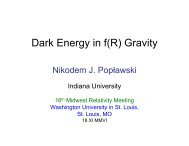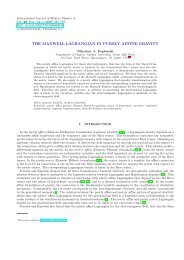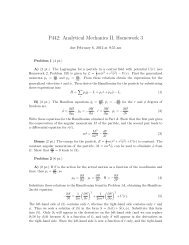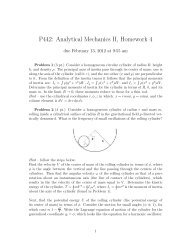Over Two-Hundred Education & Science Blogs * † - Department of ...
Over Two-Hundred Education & Science Blogs * † - Department of ...
Over Two-Hundred Education & Science Blogs * † - Department of ...
You also want an ePaper? Increase the reach of your titles
YUMPU automatically turns print PDFs into web optimized ePapers that Google loves.
Appendix B. The ADLsphere And Blogosphere May Be Harbingers <strong>of</strong><br />
a Collective Short-Term Working Memory<br />
In “The Future <strong>of</strong> <strong>Science</strong>: Building a Better Collective Memory,” Michael Nielsen (2008) wrote<br />
(my italics):<br />
The adoption and growth <strong>of</strong> the scientific journal system has created a body <strong>of</strong> shared knowledge for<br />
our civilization, a collective long-term memory which is the basis for much <strong>of</strong> human progress. This<br />
system has changed surprisingly little in the last 300 years. The internet <strong>of</strong>fers us the first major<br />
opportunity to improve this collective long-term memory. . . .[see e.g., the physics preprint arXiv<br />
]. . . . . , and to create a collective short-term working memory, a conversational<br />
commons for the rapid collaborative development <strong>of</strong> ideas. The process <strong>of</strong> scientific discovery - how<br />
we do science - will change more over the next 20 years than in the past 300 years.<br />
As indicated in Appendix A, above, the ADLsphere and Blogosphere have both strengths and<br />
weaknesses. In my opinion, the strengths outweigh the weaknesses, and these two spheres may<br />
be harbingers <strong>of</strong> Nielsen’s vision <strong>of</strong> “a collective short-term working memory, a conversational<br />
commons for the rapid collaborative development <strong>of</strong> ideas.” Thus I’ve deemed it worthwhile to<br />
use the feedback from my earlier posts “Thirty-two <strong>Education</strong> <strong>Blogs</strong>” [Hake (2008a)], and “<strong>Over</strong><br />
Sixty <strong>Education</strong> <strong>Blogs</strong>” [Hake (2008b)] plus internet searches to compile this expanded and<br />
corrected list <strong>of</strong> “<strong>Over</strong> <strong>Two</strong>-<strong>Hundred</strong> <strong>Education</strong> & <strong>Science</strong> <strong>Blogs</strong>.”<br />
Regarding the Blogosphere: Anita Pincas (2008), responding to "Thirty-two <strong>Education</strong> <strong>Blogs</strong>"<br />
[Hake 2008a)], asked if someone might have time to prepare a rundown <strong>of</strong> the main focus <strong>of</strong><br />
each <strong>of</strong> the blogs and pointed out that:<br />
(a) few people have time to examine 32 blogs. . . . [let alone the over: 400 <strong>Education</strong> <strong>Blogs</strong><br />
(Ed<strong>Blogs</strong>) listed by Stephen Downes (2008a), over 600 Ed<strong>Blogs</strong> listed by Donaghy (2009) in her<br />
International Directory <strong>of</strong> Edubloggers (IDE), 8000 Ed<strong>Blogs</strong> listed by Blogged (2009), or 30,000<br />
Ed<strong>Blogs</strong> estimated to exist by Michael Petrilli (2009). . . . . . . .<br />
(b) keywords searches are not adequate for “finding out just what we need,” and<br />
(c) semantic web developments may help – see ISKO UK in the present list <strong>of</strong> blogs, and Miller<br />
(2008) in the REFERENCES below.<br />
What seems to be needed at this stage <strong>of</strong> the Blogosphere are:<br />
(1) more powerful search engines,<br />
(2) easily searchable Blog directories that are much more extensive than those presently<br />
available.<br />
36


